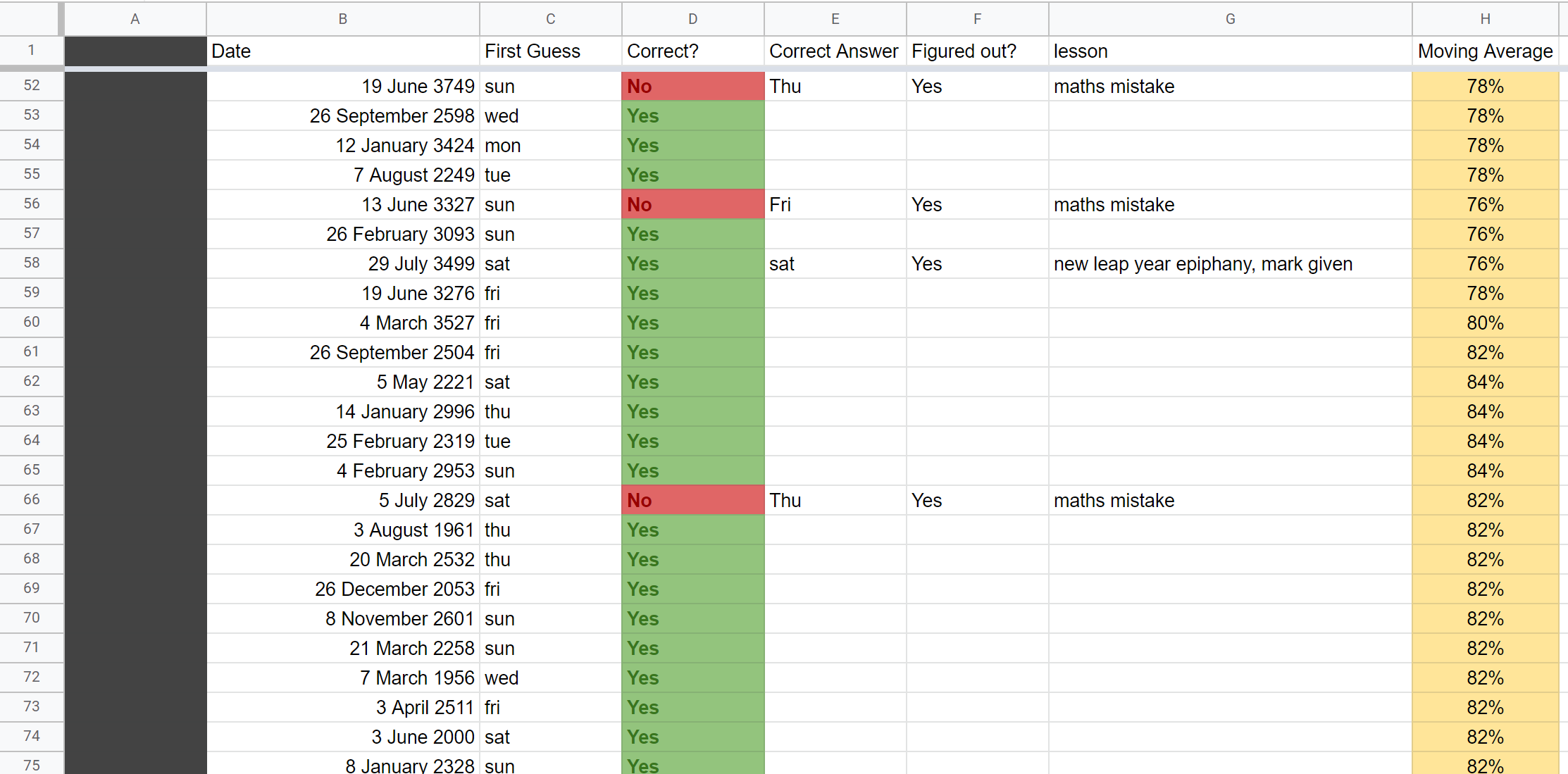How I learned the ‘day of the week’ trick
Last week, I told you about this trick I learned and how it works. Read that article here. (I’d recommend you read that article so that you understand this one better.) That was the final polished tutorial I gave you after all the hard work behind the scenes. This week, I’ll give you a peak behind the curtain and show you the messy process of how I learned it in only a few hours!
***
Once I had discovered the trick, my main resource was this Numberphile video I talked about in the previous article:
Video
Here are the notes I made:
Explanations
I want you to see these notes before I explain anything. Let’s break down my process.
I have written previously about learning in my article about a book called ‘Make it Stick’. A few key principles from that article helped me learn quickly here.
(1) Minimal Note-taking
When you’re really trying to learn something quick, you should only write down what you need to know. Summarizing and highlighting on their own are ineffective when it comes to learning. In my experience, I’d rather write too little than too much. I can see whether I’m missing information when I test myself…
(2) Pit-stop tests
At each learning point, I would pause and test if I really understood what I’ve just written down. If I can solve this type of question then I know that I understand. At most points, the video had dates that I could pause to solve before seeing the answer.
I also made short notes on my corrections to fill the gaps.
This habit is so useful if I were to come back to revise this. I only need to look at the tests! Only when I fail the test will look back at the notes.
(3) Move on quick
Once I’ve correctly answered one question, I am quick to move on. I might not feel as confident as possible on the previous check-point but moving on to more difficult problems is the best test of fundamentals. In my experience, I’d rather go too fast than too slow.
After all, we are focusing on speed here.
(4) Spaced Repetition
My goal for this was to be able to do this consistently for any date I was given. For that, I needed to test myself many, many times. So that’s exactly what I did:
A screen-shot from a large spreadsheet of dates
I programmed this spreadsheet to randomly generate dates and tell me if my first guess was right or wrong. At some point, I added columns for: corrections, whether I had figured it out and the lesson to learn. Adding a moving average of the last 50 attempts, gave me an indication of how consistent I was being.
I had built this ‘revision machine’, now I just needed to crank out the reps to fuel it. I pinned this google sheets tab to my browser and I would check in most mornings and do a few reps. This was the maintenance phase - very minimal effort was required.
I had completed what I set out for in the space of a weekend.
***
The methods I use are heavily inspired by the techniques talked about in ‘Make it Stick’. If you want to read more about the book, read the article I wrote about it here. Having struggled with revision in the past, I really believe that this is the best way to learn anything.





